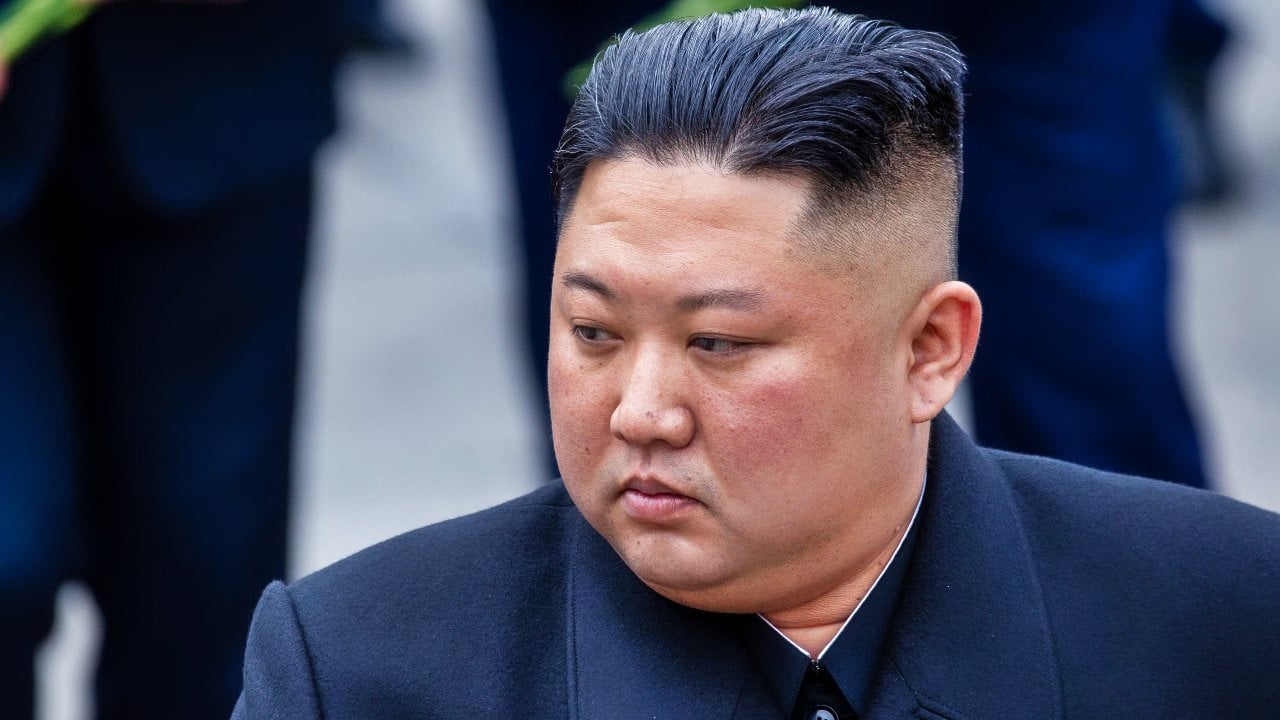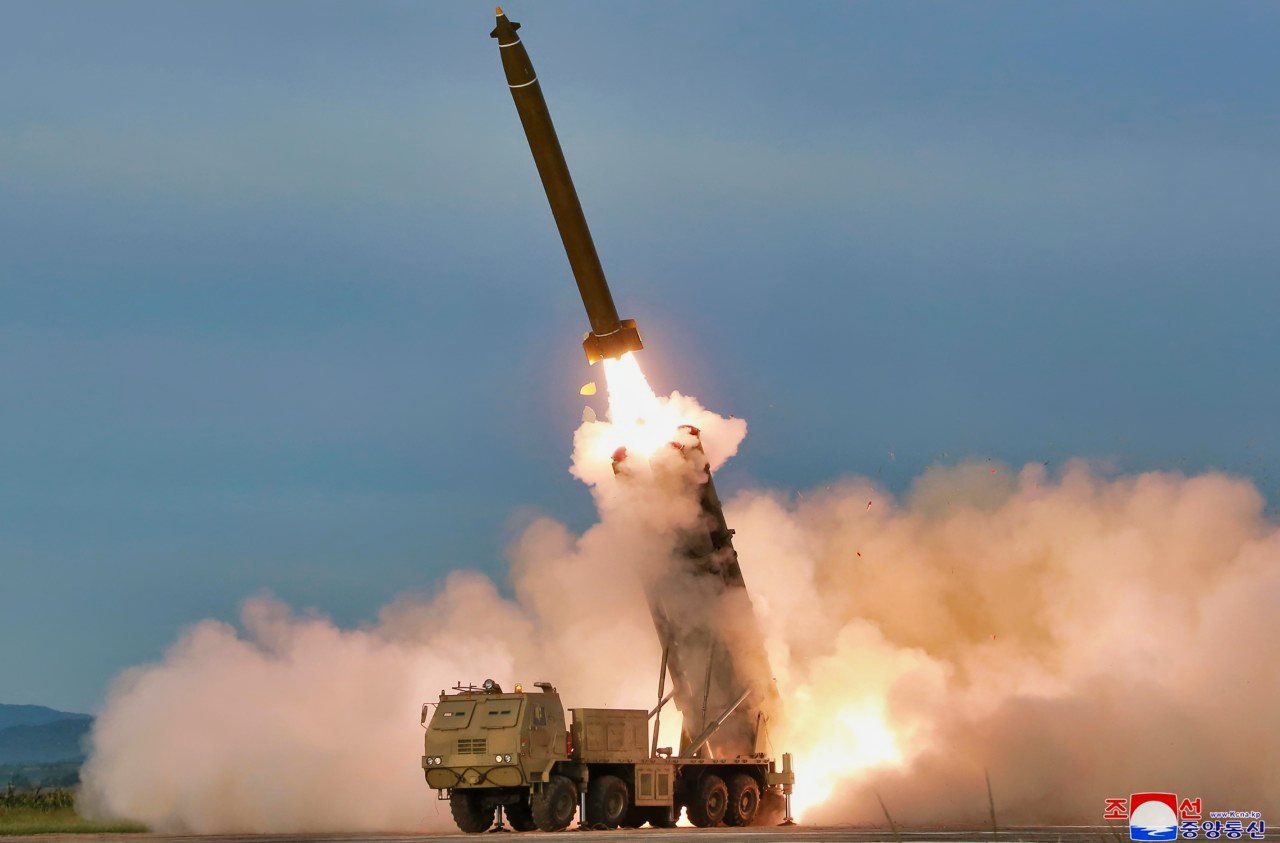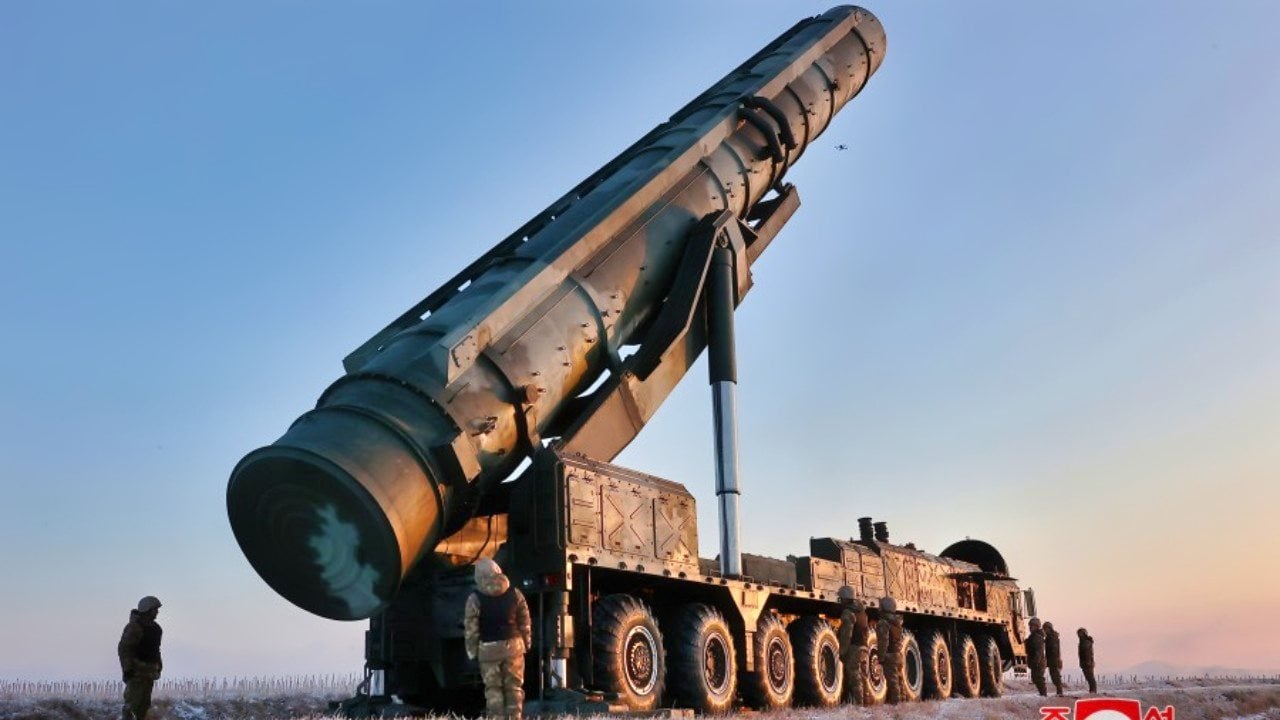A New Korean War Is Not Imminent. Accidental Escalation Might Be.
The United States should try to mitigate Seoul’s offensive impulses, calm Pyongyang, and take steps to bring back dialogue and negotiation.
The security situation in the Korean peninsula is going from bad to worse. Bellicose words dominate over words of peace. Changes in military doctrine and posture have accompanied harsh verbal exchanges. Both sides declared each other as the “main enemy.” They adopted a “force-to-force” stance, rendering the present status of inter-Korean relations a frontal confrontation with no exit. Whereas North Korea has been boosting its nuclear and missile capabilities, South Korea has responded in kind by strengthening conventional and extended deterrence against the North, increasing the intensity and frequency of ROK-U.S. joint military exercises and training, and facilitating the deployment of American strategic assets to Korea. At the Central Committee of the Workers Party of Korea (WPK) plenum on December 30, Kim Jong-un said, “The word ‘war’ is already approaching us as a realistic entity, not as an abstract concept.”
Ironically, Kim’s perception of an acute crisis is widely shared. General Mark Milley, the former Chairman of Joint Chiefs of Staff (JCS), stated in his interview with Nikkei on July 22, 2023, that “I think that the Korean situation is an area that the United States could—I’m not saying it will, but ‘could’—find itself in a state of war, you know, within a few days, with very little notice.”
Renowned North Korean affairs observers Robert Carlin and Siegfried Hecker have most recently warned that “Kim Jong-un has made a strategic decision to go to war” and advised that Washington, Seoul, and Tokyo must prepare for a worst-case. These alarmist assessments suggest that 2024 could prove to be more dangerous than 2017 when Trump’s “fire and fury” statements toward North Korea frightened South Koreans and the entire world. However, I argue that “war by a premeditated plan” is not imminent. What troubles me most is the potential for accidental military clashes between the two Koreas and the escalation into a limited or full-blown conflict involving nuclear weapons.

Fog of War on the Korean Peninsula
The Prussian military strategist Carl von Clausewitz coined the term “the fog of war” to describe uncertainties related to the outbreak and unfolding of war. Unfortunately, the fog of war is hovering above the Korean peninsula, haunting the Korean people and making it hard to predict the course of potential conflict. There are several contending perspectives.
A recent U.S. National Intelligence Estimate suggests that North Korea has three choices for nuclear strategy: coercive diplomacy, offensive deterrence, and defensive deterrence by 2030. It estimates that the North is likely to opt for coercive diplomacy, threatening the use of nuclear weapons for political, diplomatic, and economic gains, with a low probability of adopting offensive and defensive deterrence. According to a RAND report, there is a possibility of a limited war in which North Korean artillery, supported by its nuclear arsenal, could threaten Seoul from the Kaesong Heights. An Atlantic Council report also envisions the possibility of a limited war initiated by North Korea, including the potential use of limited nuclear weapons. The report highlights the prospect of simultaneous conflicts between the United States and the People’s Republic of China (PRC), as well as North Korea, or a limited nuclear attack by either adversary in the 2027–2032 timeframe. Other pundits raise the possibility of Pyongyang increasing military provocations to defuse domestic political discontent or take advantage of the legislative election in South Korea and the presidential election in the United States for diplomatic and economic gains.
Common to these war scenarios is a conventional North Korean surprise attack across the Demilitarized Zone (DMZ), involving the infiltration of special forces preceded by strategic cyber strikes against the Republic of Korea (ROK) and U.S. command and control facilities, as well as critical infrastructure in Seoul. Additionally, there may be an artillery barrage and hundreds of ballistic missiles against civilian targets. A large-scale invasion could follow these preliminary measures. Several other versions of limited war could involve a change of status quo by force, including North Korea’s seizure of islands in the West Sea.
In all these scenarios, the ROK and U.S. military are likely to undertake swift and formidable counteroffensives aimed at destroying most North Korean military and civilian targets, including its leadership and nuclear weapons. When the survival of the North Korean regime is at stake, Pyongyang is most likely to resort to chemical, biological, and even nuclear weapons, especially tactical ones, to preempt the offensive. Unless such moves are stopped, nuclear war will be an unavoidable outcome, leading to mutual probable destruction. This is more likely because the North has been increasingly utilizing its conventional weapons for the delivery of tactical nuclear warheads.

Those in Seoul and Washington strongly believe that North Korea will take preemptive military actions before a full invasion. Conversely, Pyongyang believes that South Korea and the United States will take preemptive military moves first to destroy its nuclear weapons and to remove the Kim Jong-un regime through force. Thus, for Pyongyang, any signs of its weakness will trigger South Korean and American offensive moves, even including nuclear weapons. The Democratic People’s Republic of Korea (DPRK) contends that U.S.-ROK massive combined forces maneuvers are not simply for regular exercise and training but are a calculated preparation to invade the North whenever Pyongyang reveals its weakness or unpreparedness. Here, we witness a tragedy of mirror imaging emanating from deeply rooted mutual distrust.
Nevertheless, with the use of nuclear weapons at stake, it seems quite inconceivable for either the North or the South (or the United States) to take the course of aggression, leading to a limited or all-out war. Defense planners in both countries understand that this would be suicidal. Kim Jong-un is rational enough to avoid such a course, and the same is true for South Korean and American leadership. That is why leaders of the North and the South have been using “conditional terms” in expressing their will to fight. The problem is that when war begins, and the fog of war descends, uncertain variables can intervene and inadvertently determine the war’s course.
Accidental Clashes and Escalation to Nuclear War
Such uncertainty is bound to be complicated by accidental clashes that can escalate into full-blown conflict. It is ironic to note that Kim Jong-un himself acknowledged the risk in his speech on December 30 by saying that it was “undeniable” that “two states that are most hostile [to one another] exist side by side on the Korean Peninsula” and warned that “even a small accidental clash could expand into war.” His warning is prescient. At present, several critical flashpoints could erupt.
The nullification of the inter-Korean Comprehensive Military Agreement (CMA) and the removal of buffer zones have profound implications for unexpected clashes with the potential for escalation. The West Sea is the most volatile area, notorious for military clashes. There have been three fatal naval clashes (June 1996, June 2002, and November 2009) in the West Sea. It is where the Cheonan naval vessel was torpedoed in March 2010, and the exchange of shelling took place in November 2010. Removing buffer zones in such tense areas increases the probability of unintentional clashes and escalation. When civilian fishing boats crowd the West Sea in early summer, the chances of clashes will dramatically increase. It is especially true because Chairman Kim Jong-un recently stated that “If the Republic of Korea violates even 0.001 mm of our territorial land, air, and waters, it will be considered a war provocation.” Whereas President Yoon Seok-yol has pledged to defend the Northern Limit Line (NLL) in the West Sea to the last.

Accidental exchanges in the border area known as the Military Demarcation Line (MDL) cannot be ruled out either. A skirmish involving the launching of balloons containing propaganda leaflets, mostly by North Korean defectors and their supporters in the South, is well known. In October 2014, defying the Seoul government’s appeal, North Korean defectors sent the balloons to the North, and the North Korean military shot them down with several rounds of anti-aircraft guns. South Korean soldiers on the other side of MDL responded by firing forty rounds of K-6 machine guns. Although crossfire did not escalate due to mutual restraint, residents in the border area suffered from fear and anxiety. Afterward, during the Moon Jae-in government, the National Assembly passed an amended law banning leaflet balloons. Yet the Constitution Court recently ruled that amendment unconstitutional, and North Korean defectors will resume launching balloons when wind direction is favorable in the spring. Pyongyang has already warned that it will shoot them down, calling the dispatch of propaganda balloons across the border tantamount to an act of war. Crossfire and subsequent escalation can easily victimize citizens in the border areas.
Removal of an aerial buffer zone and reactivation of surveillance by drones are another source of concern. On December 27, 2022, five North Korean drones infiltrated Seoul’s airspace, even getting close to the presidential office. Alarmed, Seoul reciprocated by increasing the frequency of its own drone-based reconnaissance and surveillance activities in the border area. The increase in such activities can be another source of disruption. The resumption of artillery firing drills from both sides in the front area can also jeopardize stability and precipitate accidental clashes.
Likewise, in the absence of guardrails such as the CMA and channels of communications such as political and military hotlines and contacts, accidental clashes can easily climb up the ladder of escalation, even though limited or all-out attacks by both sides are far less likely to occur. Changing the rules of engagement, which mandates immediate and massive retaliation and punishment by both Koreas, can also fuel the crisis escalation. The adoption of preemptive strikes and integration of conventional and nuclear deterrence further heighten the chance for nuclear conflict. Finally, in theory, the United States can mitigate the escalation of accidental clashes through the United Nations Command that oversees the Armistice Agreement and the ROK-U.S. Combined Command that exercises wartime operational control over the South Korean forces. However, the acuteness of the crisis and Seoul’s commitment to immediate retaliation and punishment could limit the effectiveness of American intervention.
Avoiding Crisis Escalation on the Korean Peninsula
The sequence of accidental clashes, crisis escalation, and war might appear rational at each incremental step until the conflict spirals entirely out of control. This dilemma constitutes the essence of the security risk in Korea in 2024. Such a sequence must be avoided at any cost. What measures are needed?

First, both Koreas should refrain from proactive deterrence of escalation and should restore confidence-building measures (CBMs). They would show mutually restraining behavior while putting brakes on the exchange of hostile rhetoric and offensive military postures and moves. The nullified CMA must be reinstated, communication channels must be reopened, and Seoul and Pyongyang should work hard to revive backchannel diplomacy. Now is not the time to discard hard-won CBMs and burn the bridges of contact and communication.
Second, to build the CBMs, both Koreas should avoid mutual demonization. Demonization denies strategic empathy and blocks engagement, without which a breakthrough cannot be reached. Both sides should be willing to engage with the other they now see as evil to avoid war. Wishful thinking about a unilateral surrender or collapse of the other side—a view often rooted in ignorance, misjudgment, false conjectures, and hubris—is the surest path to an unforgivable catastrophe.
Third, avoidance of crisis escalation is feasible only when conflicting parties seek practical solutions. Neither insisting on denuclearization as an uncompromising precondition nor justifying nuclear armament while seeking sanctions relief and diplomatic normalization provides a viable starting point. The two sides should find more realistic solutions to link denuclearization with sanction relief, diplomatic normalization, and a peaceful regime. It should be remembered that negotiated peace is always the product of compromise and never the result of one prevailing over the other.
Finally, preventive diplomacy by great powers is essential for avoiding crisis escalation and war in Korea. The United States should try to mitigate Seoul’s offensive impulses, calm Pyongyang, and take steps to bring back dialogue and negotiation. Strategic patience or status quo management alone cannot prevent the outbreak of war. Similarly, China should not remain an indifferent bystander.

Beijing should make more active diplomatic efforts to stabilize the security situation in Korea. Otherwise, it can be accused of favoring the Korean conflict in order to divert American attention away from Taiwan and the South China Sea. Most importantly, the two great powers must share a common interest in maintaining peace in Korea by reactivating U.S.-Chinese cooperation to engage the DPRK while persuading the ROK. Russia, Japan, the European Union (EU), and other middle powers with stakes in Korea should also join collective efforts to avert the crisis and restore peace to the peninsula.
About the Author
Chung-in Moon is the James Laney Distinguished Professor at Yonsei University and Vice Chair of the Asia-Pacific Leadership Network for Nuclear Nonproliferation and Disarmament (APLN). He served as Special Advisor to President Moon Jae-in for national security and foreign affairs (2017-2021). The author thanks Frank Aum, Peter Hayes, David Plott, and Leon Sigal for their valuable comments.
All Images are from Shutterstock or Creative Commons.


